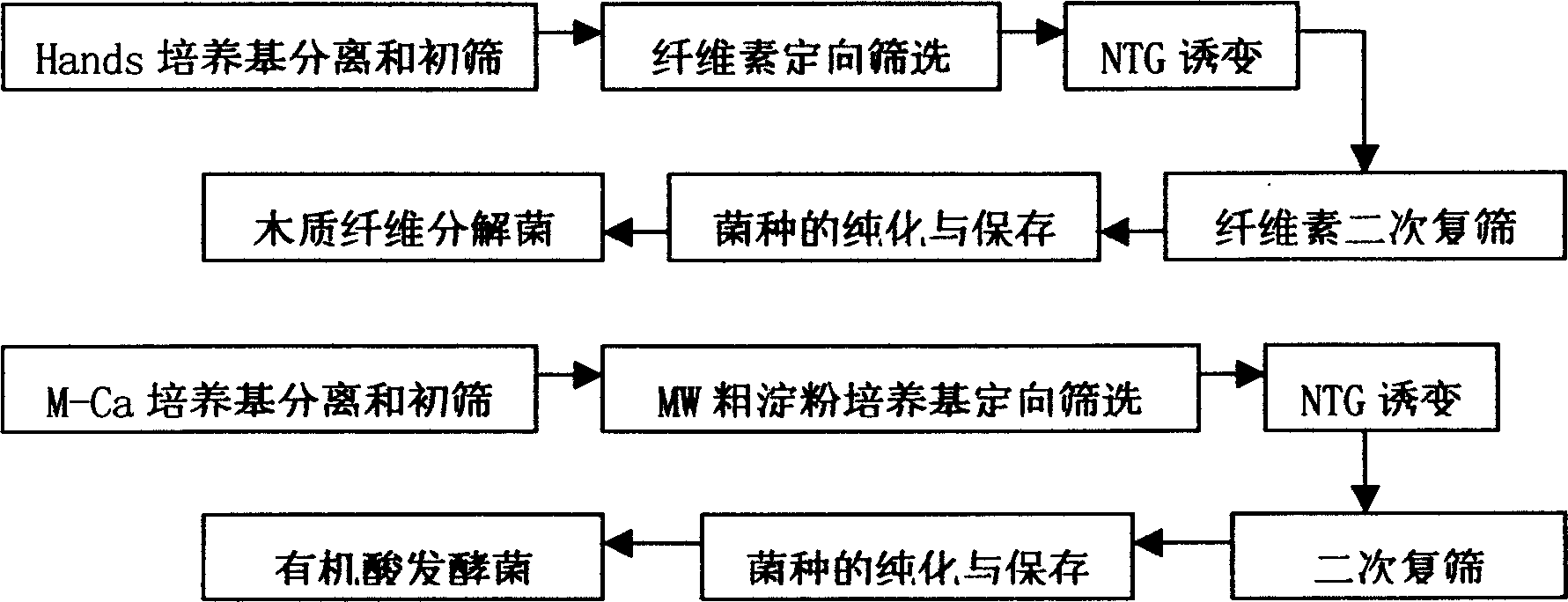Microbial ensiling strain and composite fungus, method for producing silage
A technology of silage and microorganisms, applied in the field of microbial feed additives, to achieve the effect of rich nutrition and waste reduction
- Summary
- Abstract
- Description
- Claims
- Application Information
AI Technical Summary
Problems solved by technology
Method used
Image
Examples
Embodiment 1
[0050] Embodiment one: Streptococcus lactis and its function in silage strains
[0051] Lactococcus, Streptococcus lactis, facultative anaerobic lactic acid producing bacteria. In the initial stage of silage, it can multiply rapidly, produce a large amount of lactic acid, quickly reduce the pH, and effectively control the silage process.
[0052] 1.1 Strain culture
[0053] Plate medium: corn steep liquor 3%, soluble starch 2.3%, CaCO 3 2%, agar 2%, pH6.8-7.0, 1.6ml of 1.6% bromocresol phenol purple ethanol solution, sterilized at 121°C for 30 minutes;
[0054] Slant culture medium: do not add bromocresol phenol purple ethanol solution, and the rest of the ingredients are the same as above to make a slant (first subpackage and then sterilize, or first sterilize and then subpackage).
[0055] Activation of strains: draw a line on the plate from the slant strains or fermentation broth, culture at 37°C for 24 hours to 48 hours, and obtain a single colony (the surrounding cultu...
Embodiment 2
[0098] Microbial silage complex is a mixture of: 2 grams of Candida utilis, 1 gram of Streptococcus lactis, 1 gram of Lactobacillus plantarum, and 1 gram of Bacillus subtilis composition.
[0099] The method for producing livestock feed by fermenting silage stalks with the above-mentioned microbial silage compound bacteria is as follows:
[0100] 1. Raw material preparation:
[0101] (1) 2.5 tons of whole corn (cut at wax ripening stage), chopped to 2cm-3cm;
[0102] (2) 150 kg of water, add 1.2 kg of salt to prepare 0.8% saline solution;
[0103] (3) 15 kg of table salt.
[0104] 2. Bacteria resurrection: use 5 grams of silage agent. Put the silage bacteria into 500ml of clear water, add 4g-5 white granulated sugar, revive it after about 0.5 hours at room temperature, and then pour the bacteria agent into the pre-alkaline salt water to dissolve. The revived bacterial solution should be used as it is prepared, and it is best to use it up on the same day.
[0105] 3. Cell...
Embodiment 3
[0109] The microbial silage complex consists of: 2 grams of Candida utilis, 1.5 grams of Streptococcus lactis, 1 gram of Lactobacillus plantarum, and 0.5 grams of Bacillus subtilis.
[0110] The method for producing livestock feed with the above-mentioned microbial silage compound bacterial agent is the same as in Example two.
PUM
| Property | Measurement | Unit |
|---|---|---|
| decomposition efficiency | aaaaa | aaaaa |
Abstract
Description
Claims
Application Information
 Login to View More
Login to View More - R&D
- Intellectual Property
- Life Sciences
- Materials
- Tech Scout
- Unparalleled Data Quality
- Higher Quality Content
- 60% Fewer Hallucinations
Browse by: Latest US Patents, China's latest patents, Technical Efficacy Thesaurus, Application Domain, Technology Topic, Popular Technical Reports.
© 2025 PatSnap. All rights reserved.Legal|Privacy policy|Modern Slavery Act Transparency Statement|Sitemap|About US| Contact US: help@patsnap.com



